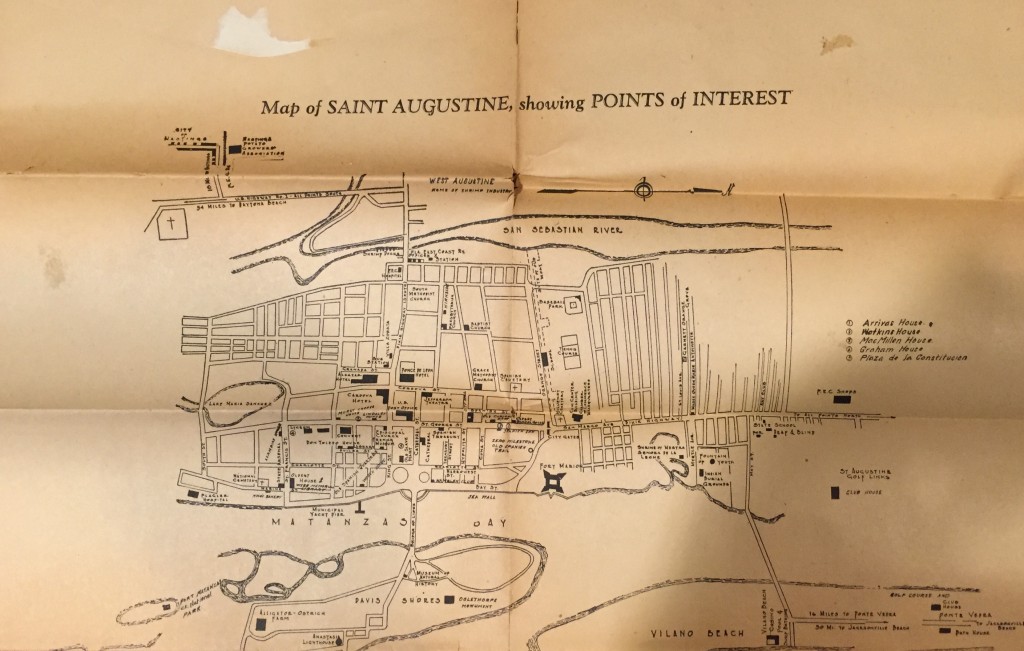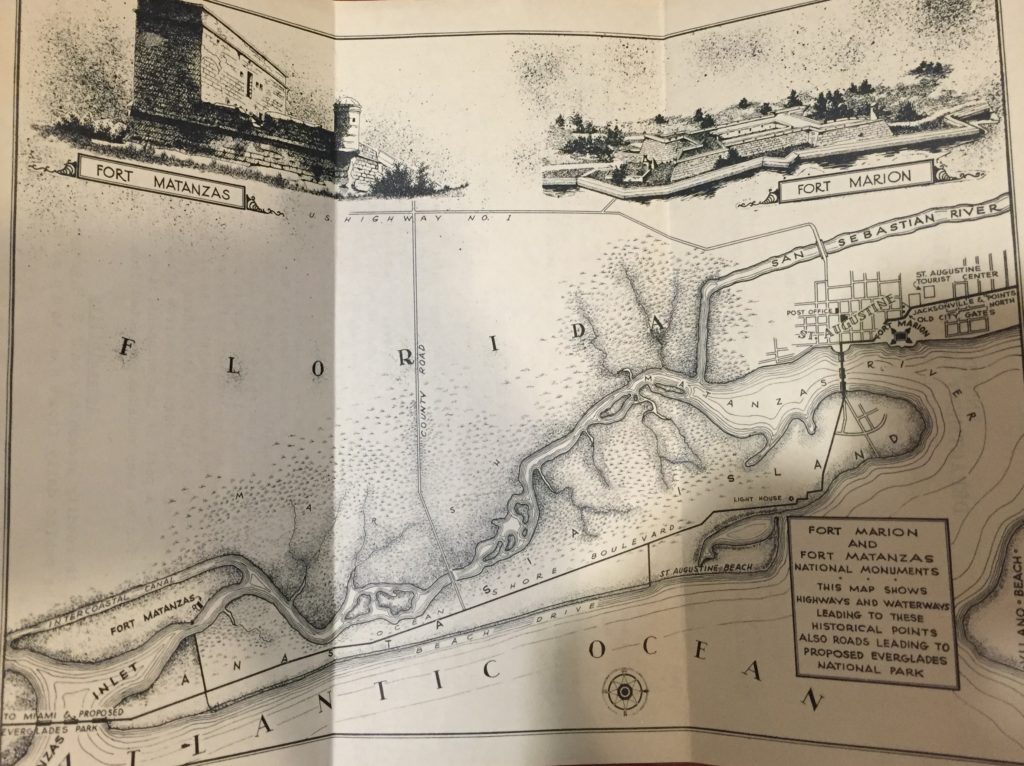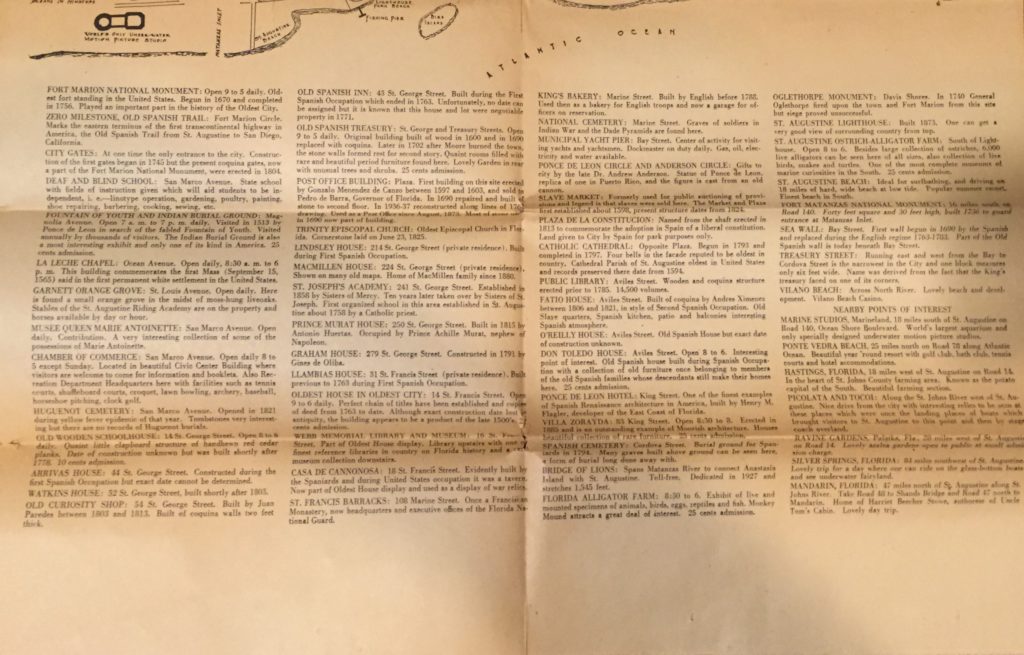Every month we will be highlighting an artifact from our Museum Collection. Our Collections team has many interesting artifacts that they are currently preserving and we would like to share them with you.
The first map was used to highlight points of interest for those visiting Saint Augustine, much like the maps many visitors still use today to navigate through the city. The second, which was issued by the United States Department of the Interior features Fort Matanzas and Fort Marion (Castillo de San Marco).
The Map of Saint Augustine, showing Points of Interest is from the 30’s and displays many sites which are still visited today. Some of these sites include: Fort Marion (Castillo de San Marco), City Gates, Florida School for Deaf and Blind, Fountain of Youth, Old Wooden School House, Ponce de Leon Hotel, Villa Zorayda, Bridge of Lions, The Alligator Farm, and best of all The St. Augustine Lighthouse.
On the map a visitor could also find a list of the points of interest with a description of the site, a brief history, the address, the hours of operation, and the admission price if this information was available. Under the Saint Augustine Lighthouse it reads “Built in 1873.
One can get a very good view of the surrounding country from top.” The Old Wooden School House has a more detailed description, it reads “14 St. George Street. Open 8 to 6 daily. Quaint little clapboard structure of hand-hewn red cedar planks. Date of construction unknown but was built shortly after 1778. 10 cents admission.”
The map of Fort Matanzas and Fort Marion, created in December of 1937 shows highways and waterways that a visitor could take to reach either location. On the backside of the map there is a description, history, and how to gain access to Fort Marion. The description lets visitors know what the fort is made of, the shape of it, the size and various interesting facts about the different rooms inside the fort. Under the history one of the first things mentioned is that “Fort Marion” was formally known as “Caste San Marcos”.
When Florida was purchased by the United States in 1821 they changed the name from “Caste San Marcos” to “Fort Marion” as a way to honor Revolutionary War General Francis Marion. While the fort was under the control of the United States it was used primarily as a prison, especially during The Second Seminole War. By 1942 Fort Marion’s name was changed back to Castillo de San Marco and its function remains as an attraction to tourists.
Jordan Sanders is currently studying Strategic Communication and Advertising at Flagler College. She is from Long Island, New York, and is currently interning with our public relations department.





